ETV STR61-70-13
Electric angle nutrunner
Product Information
General Information
Symbols on the Tool
The symbols on the tool have the following meanings:
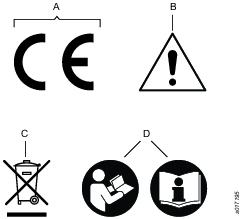
A | Directive 2006/42/EC on Machinery specifies the essential health and safety requirements the product has to meet in order for the manufacturer to affix the CE marking. |
B | When operating the device be sure to use caution. |
C | The symbol indicates that parts within the product must be handled in accordance with the WEEE Directive. |
D | Read the instruction manual/booklet before starting work or before operating equipment or machinery. |
Safety Signal Words
The safety signal words Danger, Warning, Caution, and Notice have the following meanings:
DANGER | DANGER indicates a hazardous situation which, if not avoided, will result in death or serious injury. |
WARNING | WARNING indicates a hazardous situation which, if not avoided, could result in death or serious injury. |
CAUTION | CAUTION, used with the safety alert symbol, indicates a hazardous situation which, if not avoided, could result in minor or moderate injury. |
NOTICE | NOTICE is used to address practices not related to personal injury. |
Warranty
Product warranty will expire 12 months after the product is first taken into use, but will in any case expire at the latest 13 months after delivery.
Normal wear and tear on parts is not included within the warranty.
Normal wear and tear is that which requires a part change or other adjustment/overhaul during standard tools maintenance typical for that period (expressed in time, operation hours or otherwise).
The product warranty relies on the correct use, maintenance, and repair of the tool and its component parts.
Damage to parts that occurs as a result of inadequate maintenance or performed by parties other than Atlas Copco or their Certified Service Partners during the warranty period is not covered by the warranty.
To avoid damage or destruction of tool parts, service the tool according to the recommended maintenance schedules and follow the correct instructions.
Warranty repairs are only performed in Atlas Copco workshops or by Certified Service Partners.
Atlas Copco offers extended warranty and state of the art preventive maintenance through its ToolCover contracts. For further information contact your local Service representative.
For electrical motors:
Warranty will only apply when the electric motor has not been opened.
ServAid
ServAid is a portal that is continuously updated and contains Technical Information, such as:
Regulatory and Safety Information
Technical Data
Installation, Operation and Service Instructions
Spare Parts Lists
Accessories
Dimensional Drawings
Please visit: https://servaid.atlascopco.com.
For further Technical Information, please contact your local Atlas Copco representative.
Website
Information concerning our Products, Accessories, Spare Parts and Published Matters can be found on the Atlas Copco website.
Please visit: www.atlascopco.com.
Safety Data Sheets MSDS/SDS
The Safety Data Sheets describe the chemical products sold by Atlas Copco.
Please consult the Atlas Copco website for more information www.atlascopco.com/sds.
Product Safety Video for Nutrunners
Learn more about safety features on Atlas Copco nutrunners and what measures the operator has to take for a safe operation. Click the link or scan the QR code below to view the video:
https://www.youtube.com/watch?v=FAh6yttvUpw
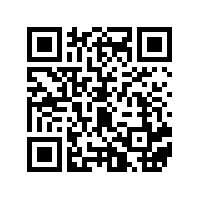
Country of Origin
For the Country of Origin, please refer to the information on the product label.
Dimensional Drawings
Dimensional Drawings can be found either in the Dimensional Drawings Archive, or on ServAid.
Please visit: http://webbox.atlascopco.com/webbox/dimdrw or https://servaid.atlascopco.com.
Overview
The Tensor System
The Tensor system consists of a range of tightening tools powered by brushless electric motors and different drive units.
Motors are available in different sizes. All tools are protected from overheating of the motor. Electrical protection system is based on an earth fault circuit brake, Earth Fault Protector (EFP). The EFP senses small current leakage (>30mA) and if leakage occurs, the drive is switched off (30ms). Changing, interfering or tampering with the protection system voids all warranty and obligations from Atlas Copco. Trouble-shooting and re-start of the system may only be carried out by an authorized person. Check the function of the EFP on a regular basis by pressing the trip-button. The EFP should switch off accordingly.
Technical Product Data
Technical Product Data can be found on either ServAid, or the Atlas Copco website.
Please visit: https://servaid.atlascopco.com or www.atlascopco.com.
RFID Chip
The tool has an embedded RFID chip which stores information about the product. The chip is located on the motor of the tool. With an RFID reader it is possible to read and write information to the chip.
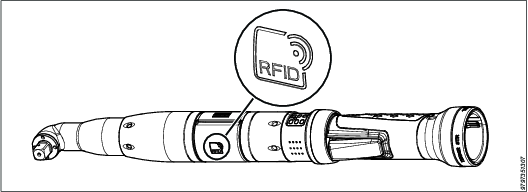
EPC Memory
Product number, generation letter and serial number of the tool are stored in the EPC memory of the RFID chip. The information is presented as a 20-character-long string.
Example
String stored in EPC memory: 84366130150670730145

The string reserves three characters for the generation letter, which is presented in ASCII format. As the ASCII codes of the generation letters only use two characters, a “0” is always added in front of the ASCII code.
The table below shows the generation letters with corresponding ASCII codes.
Generation | ASCII | Generation | ASCII |
A | 65 | N | 78 |
B | 66 | O | 79 |
C | 67 | P | 80 |
D | 68 | Q | 81 |
E | 69 | R | 82 |
F | 70 | S | 83 |
G | 71 | T | 84 |
H | 72 | U | 85 |
I | 73 | V | 86 |
J | 74 | W | 87 |
K | 75 | X | 88 |
L | 76 | Y | 89 |
M | 77 | Z | 90 |
The EPC memory is writable which enables the chip information to be reprogrammed in cases where the motor from one tool is to be reused in another tool.
User Memory
Apart from the tool information in the EPC memory, the RFID chip also contains a 512-bit user memory, available for the customer to add any additional information.
Use a UHF RFID Reader to read and write the RFID chip.
Technical Specification
Performance Characteristics
Read range (handheld)* | Up to 5 ft (1.5 m) |
Read range (fixed)* | Up to 6.6 ft (2 m) |
*Performance based on standard testing methodologies which may vary depending on environmental factors and reader output power.
Functional Specifications
RF protocol | EPC global Class 1 Gen2 |
Frequency | 902-928 (US) ; 865-868 (EU) |
Memory* | 96-EPC bits, 64-bit unique TID, 512 -bit User Memory |
*EPC and User Memory can be re-programmed, password protected, or permanently locked. TID is locked and unique at the point of manufacturing.
Industry Compliance
RoHS | EU Directive 2011/65/EU |
CE | Yes |
Service Overview
Service Recommendations
Preventive maintenance is recommended at regular intervals. See the detailed information on preventive maintenance. If the product is not working properly, take it out of service and inspect it.
If no detailed information about preventive maintenance is included, follow these general guidelines:
Clean appropriate parts accurately
Replace any defective or worn parts
Installation
Installation Requirements
Socket release function
It is recommended to use the socket release function on all the ETP ST101 tools. When the function is enabled, the socket rotates backwards 3° after a completed tightening. The aim is to reduce tension on the reaction bar and to make it easier to remove the tool.
The socket release function is turned on from the controller.
On Power Focus 4000:
-
Push the Prog button
-
Use the navigation buttons to follow the path > Pset > Programming+ > Options > Socket release > Mode On
Tool display
The tool display is turned on from the controller.
On Power Focus 4000:
Push the Prog button
Use the navigation buttons to follow the path > Tool > Configuration > Accessory bus > ST bus > Mode
Connecting the Tool
The tool should, via its correct Power Focus drive unit, be connected to the mains, 230V/50Hz alternatively 115V/ 60Hz, single phase. See instructions for your Power Focus drive unit.
Grounding
If the tool is mounted in a handheld or hand guided fixture, the fixture should be connected to the drive using a separate 2.5mm2 grounding cable.
Installation Instructions
Installation
The tool should, via its correct POWER FOCUS/drive unit, be connected to the mains, 230V/ 50Hz alternatively 115V/ 60Hz, single phase. See instructions for your POWER FOCUS/ drive unit.
Fitting of the tool cable:
Security check that the cabletype is correct
Align the cable connector using the two asymmetrically positioned heads on the connector to fit in the slots in the tool handle.
Tighten the lock nut.
Security check that the connection is correct by pulling, pushing and turning the cable connector (there should be no movement).
The tool has a built in electronic memory chip that will transmit the torque transducer calibration value and angle pulses to the POWER FOCUS/drive unit. Any changes made of these values in the POWER FOCUS while the tool is connected will be stored in the tool memory.
Fitting of the Tool Cable
-
Make sure that the tool cable is of correct type.
-
Align the cable connector using the two asymmetrically positioned heads on the connector to fit in the slots in the tool handle.
-
Tighten the lock nut.
-
Make sure that the connection is correct by pulling, pushing and turning the cable connector (there should be no movement).
The tool has a built in electronic memory chip that will transmit the torque transducer calibration value and angle pulses to the POWER FOCUS/drive unit. Any changes made of these values in the POWER FOCUS while the tool is connected will be stored in the tool memory.
Fixtures for Tensor angle type models
Atlas Copco provides several separate fixtures for the Tensor angle type models.
-
Make sure that accessories, such as bar code scanners and different types of selectors, do not interfere with the fixtures.
The ordering number for all ready-made fixtures are found att http://servaidweb.atlascopco.com:
Select Tools Accessories.
Enter product number or name for the tool.
Click Search.
Note that more solutions may be available at a later date.
Fixtures provided by Atlas Copco
Extension for fixturing
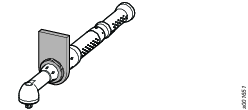
The extension for fixturing is mounted directly on the tool between the angle head and the gearbox.
Atlas Copco recommends this solution.
This fixture can be used for all Tensor STB/ST/STR/ES61 models, regardless of size.
To fit the fixture onto the tool, the front part of the tool must be dismantled and then assembled again. An extra front mounting nut is required.
Reaction plate
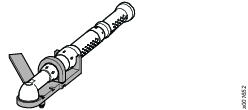
The reaction plate fixture allows changes to the position of the reaction bar for different applications.
This fixture can be used for all Tensor STB/ST/STR/ES61 models, regardless of size.
Angle tool holder
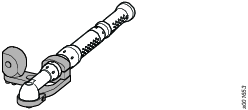
The tool holder is primarily developed to fit Atlas Copco Torque arms. It can be mounted in several ways depending on the application.
This fixture can be used for all Tensor ST/STR models, regardless of size.
Universal tool holder (< 50 Nm)

The universal tool holder is suitable for all SL/SR models.
Customer-developed fixturing equipment
The guidelines differ depending on the separate torque ranges for the tools, and if the tool is equipped with a Torque Multiplier.
Never put a clamp holding the fixture on the surface covering the torque transducer!
Avoid point loads.
Clamping load must not exceed 2 kN.
There are no restrictions on the following:
Materials used for the clamps
Bearing or swiveling arrangement for the fixture
Overall thickness of the clamp
For all tools equipped with a Torque Multiplier
Primarily, place the fixture on the spline at the tip of the multiplier.
If this is not possible, the fixture should be placed on the multiplier or on the mounting plate. This is because the tool is not dimensioned for the high torque that the multiplier can deliver.
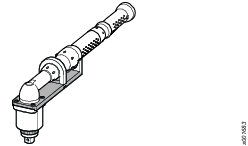
For torque less than 100 Nm
-
The clamping area shall be as large as possible
Avoid clamping on the angle head and cap nut.
STB/ST/ES/SL/SR equipment:
Fit the clamp around the motor.
Clamp on the sides of the tool.

STR equipment:
Preferably, choose a solution that Atlas Copco provides.
If not possible, fit the clamp around the motor. Cover the inside of the clamp using a rubber cloth to protect the marking plates and plastic cover of the motor.
Clamp on the top and bottom of the tool.
Keep the clamping load as low as possible.

For torque between 100 and 200 Nm
ST/STR equipment primarily:
Fit the clamp holding the equipment around the gearbox.
The clamp should be located as close as possible to the front nut of the tool.
The clamp width should be between 15 and 20 mm.
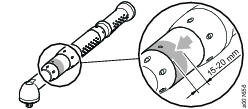
ES equipment primarily:
-
Fit the clamp around the motor.
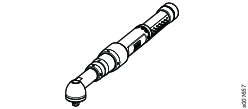
For torque above 200 Nm
Atlas Copco recommends that the holes at the front of the tool are used for the fixture.
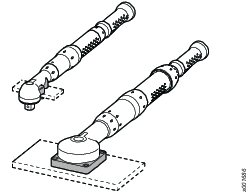
If this is not possible, place the clamps further back on the tool.
For tools below 300 Nm, place the clamp on the gearbox.
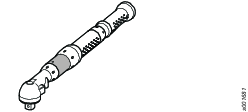
If this is not possible, place the clamp on the motor.
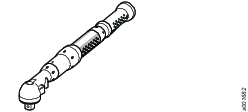
For tools from 300 Nm and upwards, use one clamp around the gearbox and one clamp around the motor.
Make sure that the center axes for the two clamps are aligned.
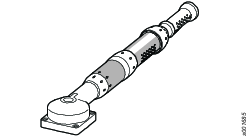
Installing accessories

Disassemble of the tool and/or accessorie must only be performed by qualified maintenance personell.

This device emits CDRH/IEC Cl ass 2 laser and IEC Class 1M light. Do not stare into the beam.


Make sure the tool is disconnected from the cable before disassembling.
Required tools:
Adjustable spanner
Screwdriver
Put the front part in a clamping jaw (choose a suitable size) and fasten the clamping jaw in a vise.
Loosen the front cap nut using an adjustable spanner. Remove the tool from the vise.
Pull out the angle gear carefully from the tool.
Remove the following parts from the angle gear housing:
the lock ring (keep for later use)
the sealing washer (to be discarded)
the front cap nut (to be discarded)
Mount the following parts on the angle gear housing:
new applicable front cap nut. Apply a thin layer of grease on the inside of the cap nut.
new sealing washer
lock ring
Replace the O-ring on the motor housing with an O-ring with the same diameter but thicker. Apply a thin layer of grease on the O-ring and on the lower section of the motor housing.
Place the tool into the half-ring with two pins on the inside. When the half-ring is placed in correct position, the pins will fit into the slots of the motor housing and prevent the half-ring from turning.
Connect the flex cable to the bus port marked 1.
Connect the flex cable on the upper half-ring to the bus port marked 2 and put together the two half-rings.
Place an O-ring in the slot at the front of the half-rings. Apply a thin layer of grease on the O-ring.
Tighten the two half-rings with 4 screws using a screwdriver.

Make sure the sealing on the end of the half-rings seals tightly.
Pull out the planetary gear from the gear housing. Push down the planetary gear fully on the shaft.

Make sure the gear wheel is placed in correct position.
Put the gear back in position. Apply a thin layer of grease on the sealing washer.
Put the front part in the clamping jaw and fasten the clamping jaw in the vise.
Tighten the front cap nut using adjustable spanners.







Mounting of swivelling suspension yoke
Required tools and material
Assembly/disassembly tool 4080 1406 80
Vise
Circlip pliers
Tools up to 50 Nm
Hold the tool using a vise and assembly/disassembly tool.
Attach the rubber cover onto the motor cover next to the assembly/disassembly tool.
Attach the clamp rings on the rubber cover.
Attach the yoke ring to the tool by pushing it onto the clamp rings.
Secure the yoke ring with a circlip in the slot of the clamp rings.


Tools from 50 Nm
Thread the circlip and the yoke ring onto the tool.
Attach the rubber cover onto the motor cover of the tool.
Attach the clamp rings on the rubber cover.
Hold the tool using a vise and assembly/disassembly tool against the rubber cover.
Push the yoke ring onto the clamp rings.
Secure the yoke ring with a circlip in the slot of the clamp rings.



Tools with accessories
Thread the circlip and the yoke ring onto the tool.
Attach the rubber cover onto the motor cover.
Attach the clamp rings on the rubber cover.
Hold the tool using a vise and assembly/disassembly tool against the rubber cover.
Push the yoke ring onto the clamp rings.
Secure the yoke ring with a circlip in the slot of the clamp rings.



Tools with scanner accessory
Attach the rubber cover on the motor cover of the tool.
Attach the clamp rings on the rubber cover.
Attach the yoke ring to the tool by pushing it onto the clamp rings.
Secure the yoke ring with a circlip in the slot of the clamp rings.


Clamping the Tensor tool to a fixture
To clamp the tool to a fixture, only the areas marked grey on the figure can be used. However, be careful not to damage the rubber coating when clamping the rubber handle.

Operation
Ergonomic Guidelines
Consider your workstation as you read through this list of general ergonomic guidelines to identify areas for improvement in posture, component placement, or work environment.
Take frequent breaks and change work positions frequently.
Adapt the workstation area to your needs and the work task.
Adjust for a convenient reach range by determining where parts and tools need to be located to avoid static load.
Use workstation equipment such as tables and chairs appropriate for the work task.
Avoid work positions above shoulder level or with static holding during assembly operations.
When working above shoulder level, reduce the load on the static muscles by lowering the weight of the tool, using for example torque arms, hose reels or weight balancers. You can also reduce the load on the static muscles by holding the tool close to the body.
Take frequent breaks.
Avoid extreme arm or wrist postures, particularly during operations requiring a degree of force.
Adjust for a convenient field of vision that requires minimal eye and head movements.
Use appropriate lighting for the work task.
Select the appropriate tool for the work task.
In noisy environments, use ear protection equipment.
Use high-quality inserted tools and consumables to minimize exposure to excessive levels of vibration.
Minimize exposure to reaction forces.
When cutting:
A cut-off wheel can get stuck if the cut-off wheel is bent or not guided properly. Use the correct flange for the cut-off wheel and avoid bending the cut-off wheel during operation.
When drilling:
The drill might stall when the drill bit breaks through. Use support handles if the stall torque is high. The safety standard ISO11148 part 3 recommends using a device to absorb a reaction torque above 10 Nm for pistol grip tools and 4 Nm for straight tools.
When using direct-driven screwdrivers or nutrunners:
Reaction forces depend on the tool settings and joint characteristics. Strength and posture determine the amount of reaction force that an operator can tolerate. Adapt the torque setting to the operator's strength and posture and use a torque arm or reaction bar if the torque is too high.
In dusty environments, use a dust extraction system or wear a mouth protection mask.
Operating Instructions
General instructions
The tool may only be used together with the associated torque reaction bar, which is adapted to the screw joint application concerned.
Operating
Make sure that the tool is in correct working order and that the controller is correctly programmed to avoid unexpected behaviour from the tool, which may result in operator injury.
Check that the tool is in the correct running direction by looking at the function light situated above the tool handle, by turning the reverse ring (only for ETV/ETD DS or by turning the arm on the trigger knob (only for ETP DS).
The soft-start function facilitates entering the screw head and thread.
The duration of the soft start is adjustable, see the manual for the drive unit.
The tool is equipped with signal lights,
Green = OK tightening
Yellow = Warning – low torque (not for ES)
Red = Warning – high torque
Orange = Function indicator (only for SL and DL)
Blue = Function indicator (only for SL)
Service
Preventing ESD Problems
The components inside the product and controller are sensitive to electrostatic discharge. To avoid future malfunction, make sure that service and maintenance is carried out in an ESD approved work environment. The figure below shows an example of an appropriate service work station.
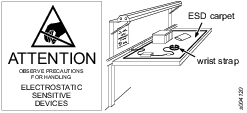
Maintenance Instructions
Overhaul
Service must only be carried out by qualified personnel who have access to the Service instruction and/or have been trained for service on Tensor tools.
The electric motor is a sealed unit and may under no circumstances be opened by anyone else than Atlas Copco Industrial Technique AB!
If you decide that the electric motor is defect or in need of service, return the complete motor unit to Atlas Copco Industrial Technique for replacement.
Motors which have been opened by anyone else than Atlas Copco Industrial Technique will not be serviced.
Overhaul and preventive maintenance is recommended at regular intervals once per year or after maximum 250.000 tightening depending on which occurs sooner. More frequent overhaul may be needed if the machine is used in heavy-duty operations. If the machine not is working properly, it should immediately be taken away for inspection.
When dismantling the tool always use the specially designed service tool 4080 0848 80, (two service tools are required).
Service Recommendations
Preventive maintenance is recommended at regular intervals. See the detailed information on preventive maintenance. If the product is not working properly, take it out of service and inspect it.
If no detailed information about preventive maintenance is included, follow these general guidelines:
Clean appropriate parts accurately
Replace any defective or worn parts
Service instructions
Overhaul and preventive maintenance is recommended at regular intervals once per year or after maximum 250.000 tightening depending on which occurs sooner. More frequent overhaul may be needed if used at high torque, high cycle rate or long tightening times. If the machine is not working properly, it should immediately be taken away for inspection.
At the overhauls, all parts should be cleaned accurately and defective or worn parts (i.e. O-rings) should be replaced.
Lubrication Instructions
Lubricant Guide
Part | Lubricant |
|---|---|
Planetary gears with bearings | Molycote BR2 Plus |
Angle gears with bearings | Atlas Gear Grease 270 (Tools configured with 110° angle head (-SZ), may also use Molycote Longterm 2 plus.) |
Cable nut | CRC Lithium Grease No. 3020 |
Threads, O-rings, other | Almagard LE 3751 |
Lubrication
Lubricate according to the Lubrication Guide at each service occasion.
For more information, see Spare Parts section in ServAid - https://servaid.atlascopco.com.
Repair Instructions
Repair
Repair must only be carried out by qualified authorised personnel. For further information contact your local Atlas Copco sales representative.
Troubleshooting
If the Tool Becomes Very Hot
With proper adjustment the tool can handle any normal line jobs that an operator sustains. What can cause overheating are combinations of some factors: torque above rated, too low speed, too long ramp time (motor has to give high torque for a long time), very high prevailing torque, very soft joints, short cycle time. To correct, look over speed, ramp time, tightening strategy. One stage and Ergoramp are most heat conserving when applicable. Please refer to the User Guide of your POWER FOCUS. If the above corrections are not enough, choose a tool of the next higher capacity.
Power Focus 3000/4000
Is the POWER FOCUS switched on and in RUN mode? Check that the correct POWER FOCUS is used (ST31/ST32/ST61/STR31/STR61-Tensor3-7, ST81-Tensor8-9). Check the fuses for the drive part. Check Drive parameters, refer to the User Guide of the POWER FOCUS/ drive unit. Check the earth fault circuit breaker on the backside of the drive. Should it have tripped, make sure to find the primary fault before resuming operation. Check that the wiring on the remote start connector is correct. For further information see 9836 2258.
Power Focus 600/6000
Is the unit switched on? Check the earth fault circuit breaker behind the front door. Should it have tripped, make sure to find the primary fault before resuming operation. Check that the wiring on the remote start connector is correct. For further information see 9836 4954/9836 7446.
Recycling
Environmental Regulations
When a product has served its purpose it has to be recycled properly. Dismantle the product and recycle the components in accordance with local legislation.
Batteries shall be taken care of by your national battery recovery organization.
Recycling Information
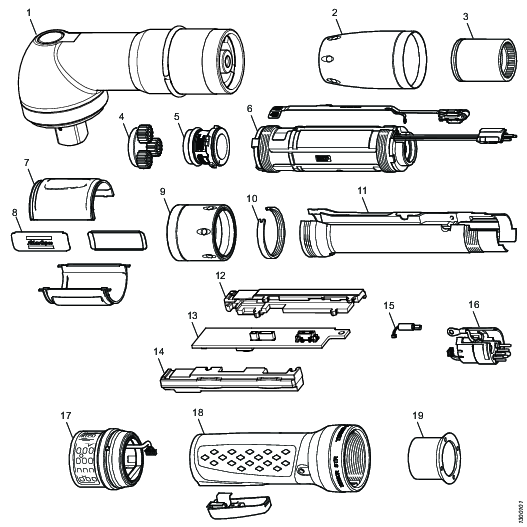
Part | Remarks | Recycle as | |
1 | Angle head | Metal, Steel | |
2 | Cap nut | Metal, Steel | |
3 | Gear casing | Metal, Steel | |
4 | Planetary gear | Steel | |
5 | Torque transducer | Metal, Steel | |
6 | Motor | WEEE | |
7 | Cover | Plastic, Other, PA | |
8 | Plates | Metal, Steel | |
9 | Cap nut |
| Metal, Steel |
10 | Snap ring | Metal, Steel | |
11 | Handle body |
| Metal, Aluminum |
12 | Main board holder | Note, only on new version of the electronics module (no 13) | Rubber, Thermoplastic elastomer |
13 | Electronics module | WEEE | |
14 | Main board holder | Note, only on new version of the electronics module (no 13) | Rubber, Thermoplastic elastomer |
15 | Electronics module | WEEE | |
16 | Electronics module | WEEE | |
17 | HMI module | WEEE | |
18 | Handle and button | Plastic, other and Metal, Steel | |
19 | Nut | Metal, Steel |

